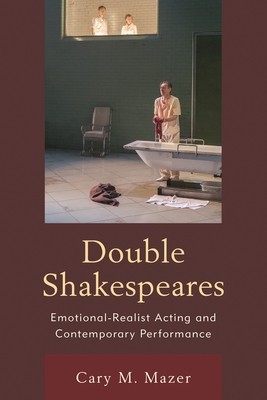
- We will send in 10–14 business days.
- Author: Cary M Mazer
- Publisher: Fairleigh Dickinson University Press
- ISBN-10: 1611478456
- ISBN-13: 9781611478457
- Format: 15 x 22.9 x 2 cm, softcover
- Language: English
- SAVE -10% with code: EXTRA
Reviews
Description
Double Shakespeares examines contemporary performances of Shakespeare plays that employ the "emotional realist" traditions of acting that were codified by Stanislavski over a century ago. These performances recognize the inescapable doubleness of realism: that the actor may aspire to be the character but can never fully do so. This doubleness troubled the late-nineteenth-century actors and theorists who first formulated realist modes of acting; and it equally troubles theorists and theatre practitioners today. The book first looks at contemporary performances that foreground the doubleness of the actor's body, particularly through cross-dressing. It then examines narratives of Shakespearean rehearsal--both fictional representations of rehearsal in film and video, and eye-witness narratives of actual rehearsals--and how they show us the process by which the actor does or does not "become" the character. And, finally, it looks at modern performances that "frame" Shakespeare's play as a play-within-a-play, showing the audience both the character in the Shakespeare play-within and the actor in the frame-play acting that character.
EXTRA 10 % discount with code: EXTRA
The promotion ends in 20d.17:07:56
The discount code is valid when purchasing from 10 €. Discounts do not stack.
- Author: Cary M Mazer
- Publisher: Fairleigh Dickinson University Press
- ISBN-10: 1611478456
- ISBN-13: 9781611478457
- Format: 15 x 22.9 x 2 cm, softcover
- Language: English English
Double Shakespeares examines contemporary performances of Shakespeare plays that employ the "emotional realist" traditions of acting that were codified by Stanislavski over a century ago. These performances recognize the inescapable doubleness of realism: that the actor may aspire to be the character but can never fully do so. This doubleness troubled the late-nineteenth-century actors and theorists who first formulated realist modes of acting; and it equally troubles theorists and theatre practitioners today. The book first looks at contemporary performances that foreground the doubleness of the actor's body, particularly through cross-dressing. It then examines narratives of Shakespearean rehearsal--both fictional representations of rehearsal in film and video, and eye-witness narratives of actual rehearsals--and how they show us the process by which the actor does or does not "become" the character. And, finally, it looks at modern performances that "frame" Shakespeare's play as a play-within-a-play, showing the audience both the character in the Shakespeare play-within and the actor in the frame-play acting that character.


Reviews